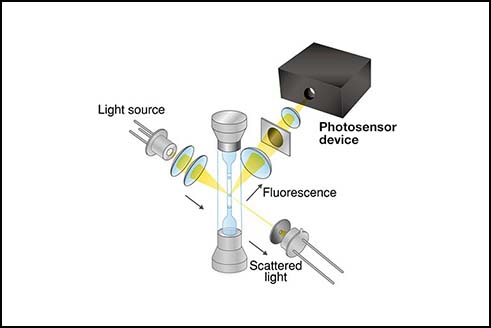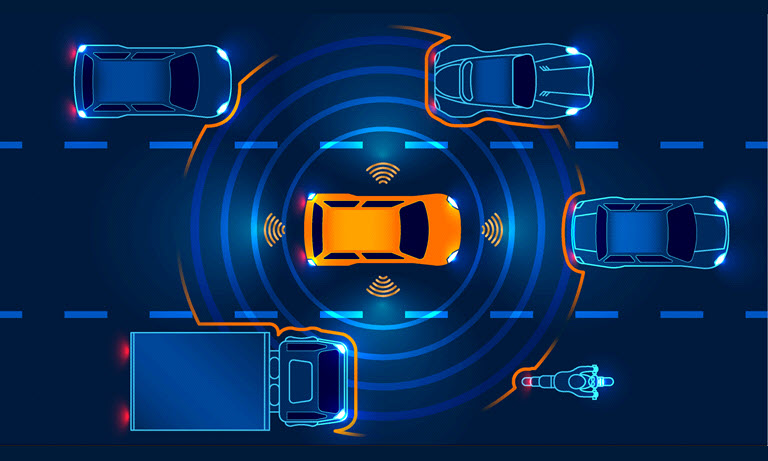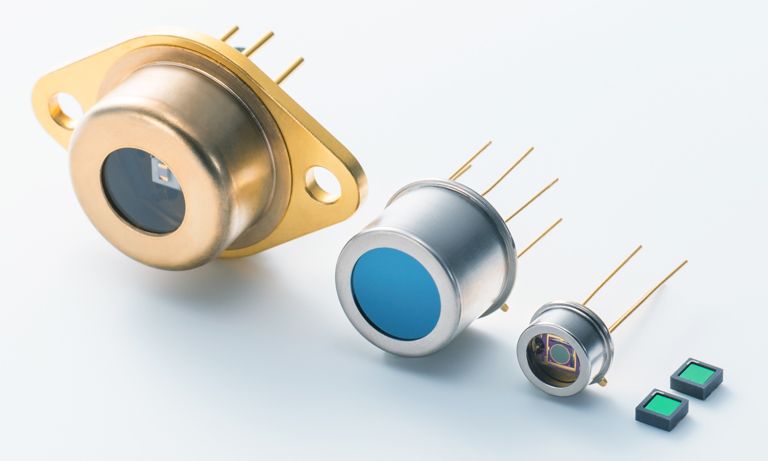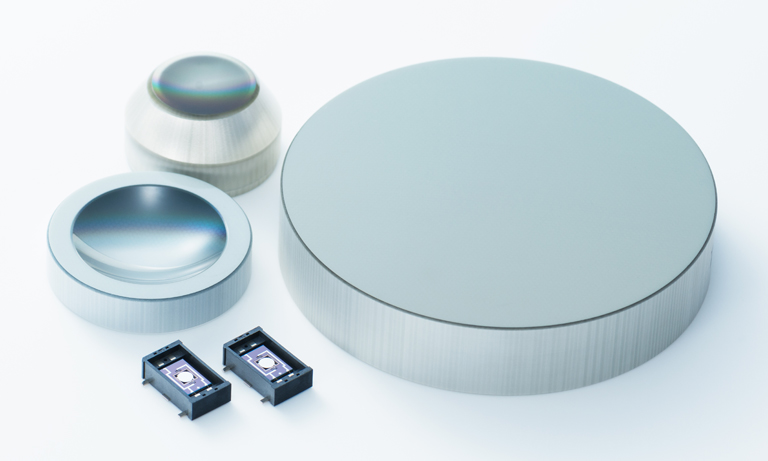Application notes
Technical notes
Ask an engineer
Publications
United States (EN)
Select your region or country.
NIR and SWIR Questions & Answers
What is near infrared (NIR) and shortwave infrared (SWIR)? What are their advantages and suitable applications?
Typically we define near infrared (NIR) from 780 nm to 1400 nm and shortwave infrared (SWIR) from 1400 nm to 3000 nm. But it is also common to refer to the entire range from 780 nm up to 3000 nm as NIR or SWIR.
The NIR/SWIR region has multiple advantages, and some of the most well-known ones are discussed below.
Beyond visible
NIR and SWIR wavelengths aren’t visible to human eyes and have less energy than UV and visible wavelengths, but the light still interacts with objects. So in the case of NIR/SWIR imaging, we can capture images of objects and see aspects that we couldn’t see in the visual range.
In addition, longer wavelengths can be used to look through plastic packaging and silicon, providing another method for nondestructive testing.
Example applications:
- Automotive
- Surveillance
- Remote sensing
- Wafer inspection
- Packaging and filling inspection
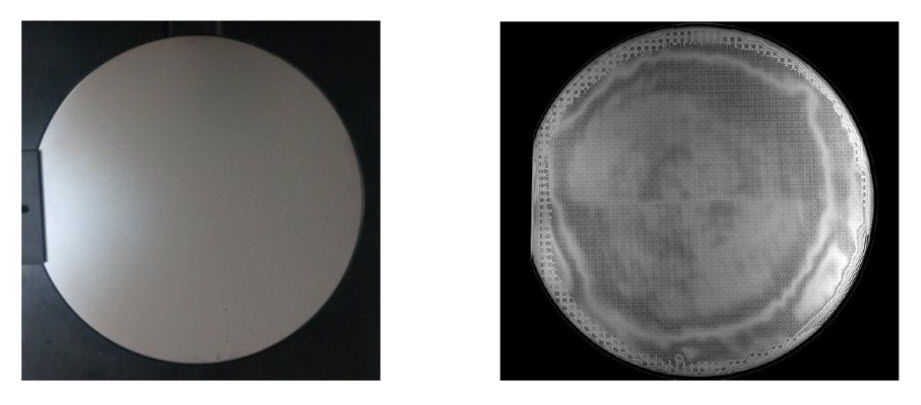
Silicon wafer: (Left) Visible image, (Right) SWIR image.
Water content measurement
Water has a high absorption rate at 1450 nm and 1900 nm, making it easy to detect areas with high water density using NIR/SWIR.
Example application: Food quality sorting

Food sorting
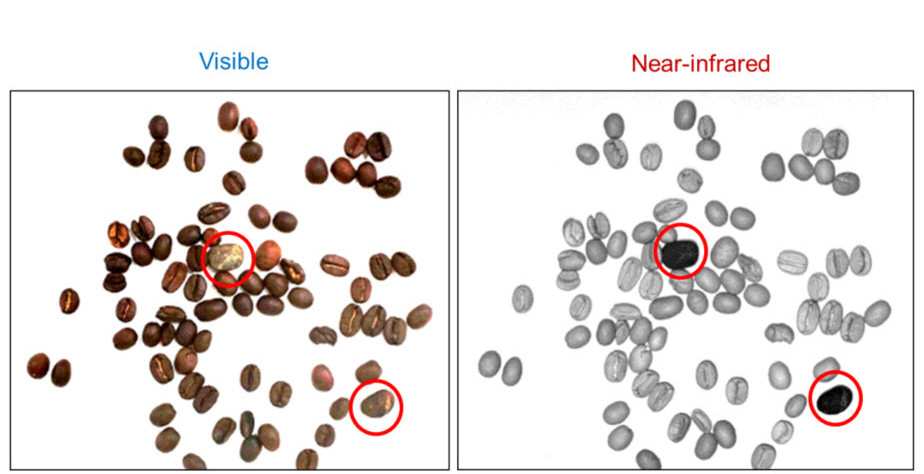
Identifying contaminants (stones) in coffee beans
Thermal detection
SWIR has the capability to detect heat even though it’s not as sensitive as MWIR (midwave infrared) and LWIR (longwave infrared), which can detect low temperatures. Unlike MWIR and LWIR imaging that blur the contours of objects in an image, SWIR imaging produces clearly defined images with added temperature information, allowing the detection of hot spots in a scene or object.
Example application: Process control
Material differentiation
Between 780-2500 nm, substances such as plastic, organic compounds, and non-organic compounds can be easily differentiated, which is hard to do in the visible range. Hyperspectral SWIR imaging can provide detailed information about an object based on its infrared spectrum.
Example applications:
- Plastic sorting
- Agriculture
- Pharmaceutical inspection

Example of hyperspectral imaging
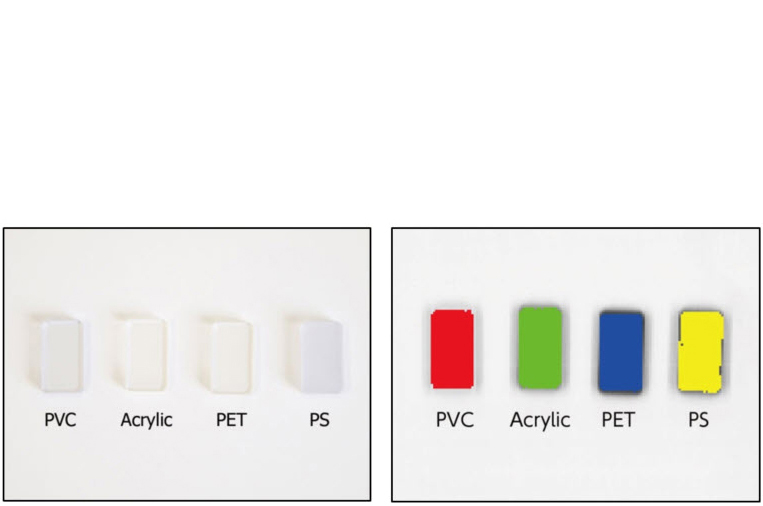
Different plastic types: (Left) Visible image, (Right) After hyperspectral imaging.
How are NIR and SWIR detected?
There are multiple methods and materials to detect NIR and SWIR including InGaAs (indium gallium arsenide), MCT (mercury cadmium telluride), and QDIP (quantum dot infrared photodetector). These three are discussed below.
InGaAs (indium gallium arsenide)
InGaAs is the most well-known material for NIR and SWIR detection. Like silicon photodetectors, InGaAs photodetectors are photovoltaic detectors with a p-n junction, but they have a smaller bandgap energy than silicon, so they detect a longer wavelength range. Standard InGaAs can detect light from 900 nm to 1700 nm, and extended InGaAs can go all the way to 2500 nm. InGaAs detectors are suitable for most NIR/SWIR applications due to their high sensitivity and high linearity.
| Pros | Cons |
|---|---|
| High sensitivity | Dark current is sensitive to temperature |
| High linearity |
To see Q&As about InGaAs, click here.
MCT or HgCdTe (mercury cadmium telluride)
MCT detectors use the photoconductive effect, where the resistance value of the detector element decreases when exposed to light. MCTs have a wide bandwidth detection range, typically from 2 µm to 14 µm but can vary within 0.8 µm and 30 µm. They are suitable for wide bandwidth applications that have no RoHS requirement.
| Pros |
Cons |
|---|---|
| High sensitivity | High cost |
| Wide bandwidth detection | Low linearity |
| Restricted by RoHS directive | |
| Typically requires Stirling coolers |
QDIP (quantum dot infrared photodetector)
Quantum dots are a new solution for certain NIR/SWIR applications. QDIPs use a layer of quantum dots on a silicon surface to create a three-dimensional quantum confinement active region, enabling the absorption of longer wavelengths. They are suitable for low cost and temperature-critical applications.
| Pros | Cons |
|---|---|
| Low cost | Low uniformity |
| Independent from temperature (or no temperature dependence) | Low sensitivity |
If you have a technical question you’d like to see answered on this page, email us.
Meet the engineer

Albert Tu is a marketing engineer working on NIR/SWIR applications. He’s been helping customers find the right solution for their technology, and he’s developing new business by exploring potential technologies. Albert’s experience in high-tech industry and startups allows him to identify the need first and to find the right solution to solve it. Recently, he enjoys cooking in his spare time and likes to try out new recipes.
- Confirmation
-
It looks like you're in the . If this is not your location, please select the correct region or country below.
You're headed to Hamamatsu Photonics website for US (English). If you want to view an other country's site, the optimized information will be provided by selecting options below.
In order to use this website comfortably, we use cookies. For cookie details please see our cookie policy.
- Cookie Policy
-
This website or its third-party tools use cookies, which are necessary to its functioning and required to achieve the purposes illustrated in this cookie policy. By closing the cookie warning banner, scrolling the page, clicking a link or continuing to browse otherwise, you agree to the use of cookies.
Hamamatsu uses cookies in order to enhance your experience on our website and ensure that our website functions.
You can visit this page at any time to learn more about cookies, get the most up to date information on how we use cookies and manage your cookie settings. We will not use cookies for any purpose other than the ones stated, but please note that we reserve the right to update our cookies.
1. What are cookies?
For modern websites to work according to visitor’s expectations, they need to collect certain basic information about visitors. To do this, a site will create small text files which are placed on visitor’s devices (computer or mobile) - these files are known as cookies when you access a website. Cookies are used in order to make websites function and work efficiently. Cookies are uniquely assigned to each visitor and can only be read by a web server in the domain that issued the cookie to the visitor. Cookies cannot be used to run programs or deliver viruses to a visitor’s device.
Cookies do various jobs which make the visitor’s experience of the internet much smoother and more interactive. For instance, cookies are used to remember the visitor’s preferences on sites they visit often, to remember language preference and to help navigate between pages more efficiently. Much, though not all, of the data collected is anonymous, though some of it is designed to detect browsing patterns and approximate geographical location to improve the visitor experience.
Certain type of cookies may require the data subject’s consent before storing them on the computer.
2. What are the different types of cookies?
This website uses two types of cookies:
- First party cookies. For our website, the first party cookies are controlled and maintained by Hamamatsu. No other parties have access to these cookies.
- Third party cookies. These cookies are implemented by organizations outside Hamamatsu. We do not have access to the data in these cookies, but we use these cookies to improve the overall website experience.
3. How do we use cookies?
This website uses cookies for following purposes:
- Certain cookies are necessary for our website to function. These are strictly necessary cookies and are required to enable website access, support navigation or provide relevant content. These cookies direct you to the correct region or country, and support security and ecommerce. Strictly necessary cookies also enforce your privacy preferences. Without these strictly necessary cookies, much of our website will not function.
- Analytics cookies are used to track website usage. This data enables us to improve our website usability, performance and website administration. In our analytics cookies, we do not store any personal identifying information.
- Functionality cookies. These are used to recognize you when you return to our website. This enables us to personalize our content for you, greet you by name and remember your preferences (for example, your choice of language or region).
- These cookies record your visit to our website, the pages you have visited and the links you have followed. We will use this information to make our website and the advertising displayed on it more relevant to your interests. We may also share this information with third parties for this purpose.
Cookies help us help you. Through the use of cookies, we learn what is important to our visitors and we develop and enhance website content and functionality to support your experience. Much of our website can be accessed if cookies are disabled, however certain website functions may not work. And, we believe your current and future visits will be enhanced if cookies are enabled.
4. Which cookies do we use?
There are two ways to manage cookie preferences.
- You can set your cookie preferences on your device or in your browser.
- You can set your cookie preferences at the website level.
If you don’t want to receive cookies, you can modify your browser so that it notifies you when cookies are sent to it or you can refuse cookies altogether. You can also delete cookies that have already been set.
If you wish to restrict or block web browser cookies which are set on your device then you can do this through your browser settings; the Help function within your browser should tell you how. Alternatively, you may wish to visit www.aboutcookies.org, which contains comprehensive information on how to do this on a wide variety of desktop browsers.
5. What are Internet tags and how do we use them with cookies?
Occasionally, we may use internet tags (also known as action tags, single-pixel GIFs, clear GIFs, invisible GIFs and 1-by-1 GIFs) at this site and may deploy these tags/cookies through a third-party advertising partner or a web analytical service partner which may be located and store the respective information (including your IP-address) in a foreign country. These tags/cookies are placed on both online advertisements that bring users to this site and on different pages of this site. We use this technology to measure the visitors' responses to our sites and the effectiveness of our advertising campaigns (including how many times a page is opened and which information is consulted) as well as to evaluate your use of this website. The third-party partner or the web analytical service partner may be able to collect data about visitors to our and other sites because of these internet tags/cookies, may compose reports regarding the website’s activity for us and may provide further services which are related to the use of the website and the internet. They may provide such information to other parties if there is a legal requirement that they do so, or if they hire the other parties to process information on their behalf.
If you would like more information about web tags and cookies associated with on-line advertising or to opt-out of third-party collection of this information, please visit the Network Advertising Initiative website http://www.networkadvertising.org.
6. Analytics and Advertisement Cookies
We use third-party cookies (such as Google Analytics) to track visitors on our website, to get reports about how visitors use the website and to inform, optimize and serve ads based on someone's past visits to our website.
You may opt-out of Google Analytics cookies by the websites provided by Google:
https://tools.google.com/dlpage/gaoptout?hl=en
As provided in this Privacy Policy (Article 5), you can learn more about opt-out cookies by the website provided by Network Advertising Initiative:
http://www.networkadvertising.org
We inform you that in such case you will not be able to wholly use all functions of our website.
Close


